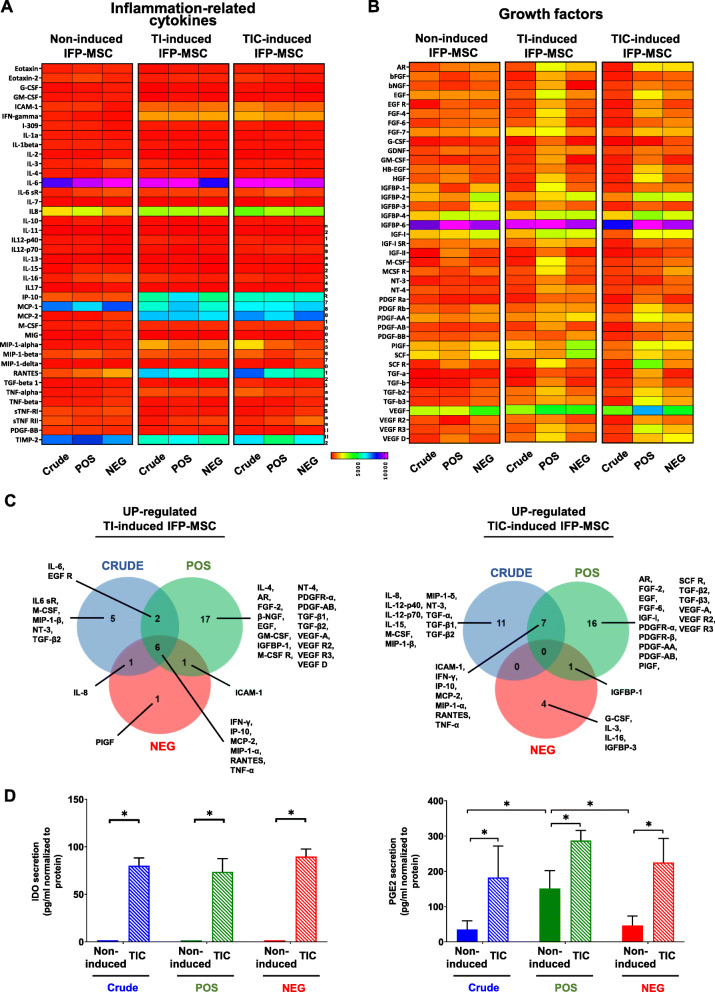Fig. 4.
Secretory profiling of Crude and CD146-selected IFP-MSC spheroids with and without exposure to inflammatory/fibrotic cues. a, b Crude and CD146-selected IFP-MSC spheroids show similar inflammation-related secretory profiles both in non-induced and TI- or TIC-induced conditions. However, their secretory profiles of reparative growth factors were distinct and characterized by the secretion of different numbers and types of proteins. Heat maps’ colors are assigned according to a molecule concentration relative scale, from 0 to 10,000 (n = 2). c In both TI- and TIC-induced conditions, CD146POS IFP-MSC spheroids show higher number of secreted proteins. Among the proteins with upregulated secretion levels, 6 and none proteins are commonly shared between the three different cohorts (Crude, CD146POS, CD146NEG) after TI and TIC induction, respectively. Venn diagram showing shared proteins among the three different cohorts (Crude, CD146POS, CD146NEG) after TI and TIC induction. All experiments were performed independently (n = 2). d In non-induced cohorts, IDO secretion is almost absent whereas PGE2 secretion is evident in all three cohorts. TIC induction results in increased IDO and PGE2 secretion levels (*p < 0.05, n = 3)

